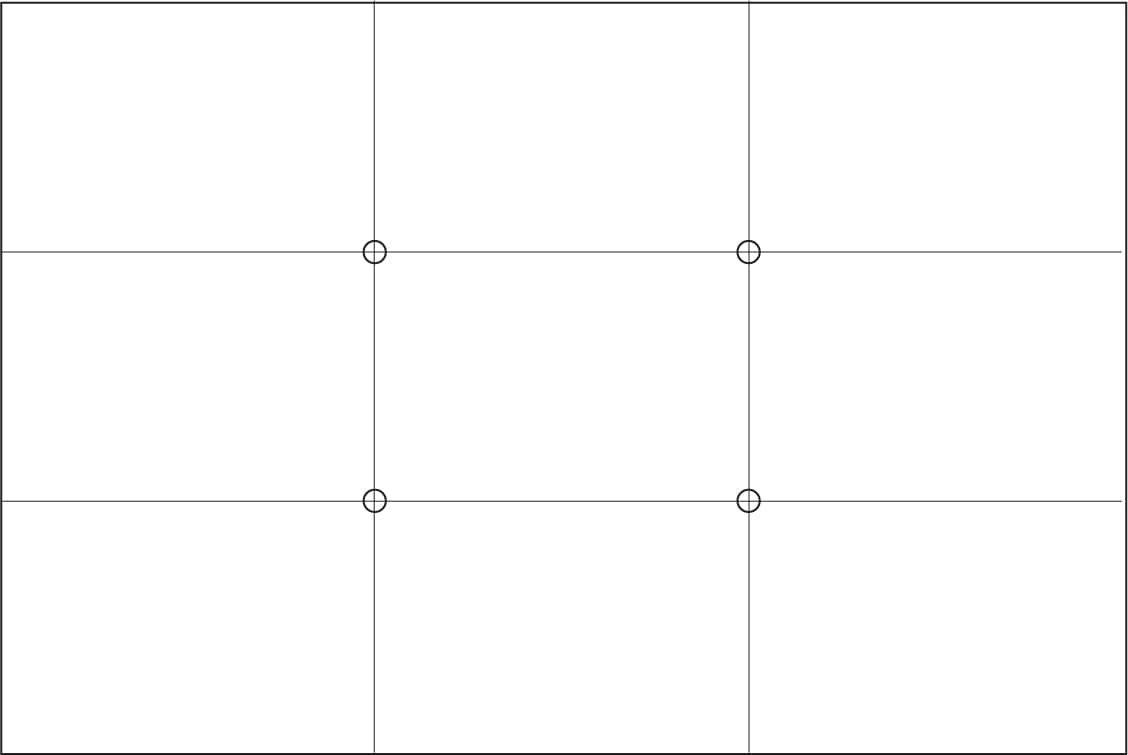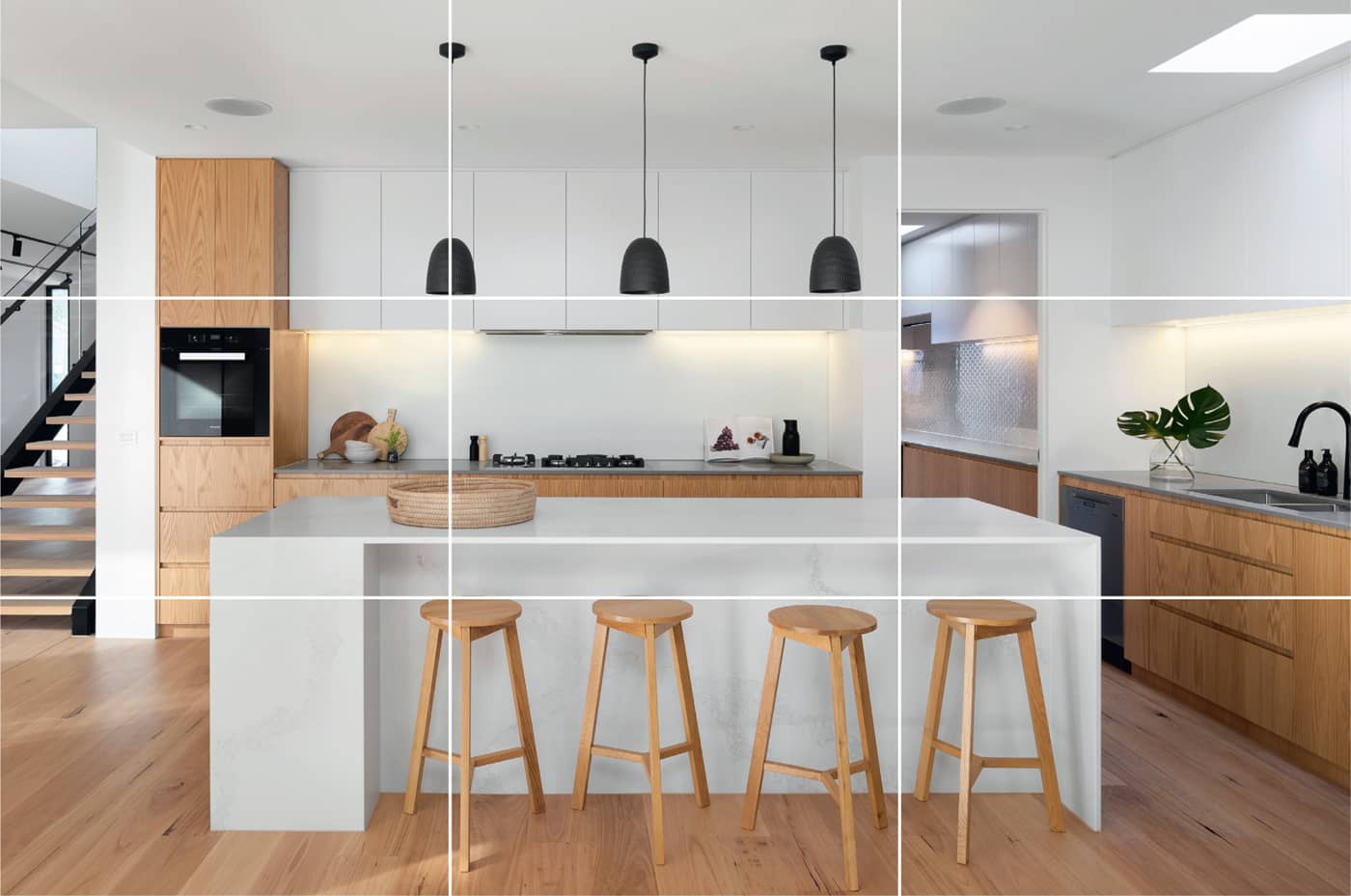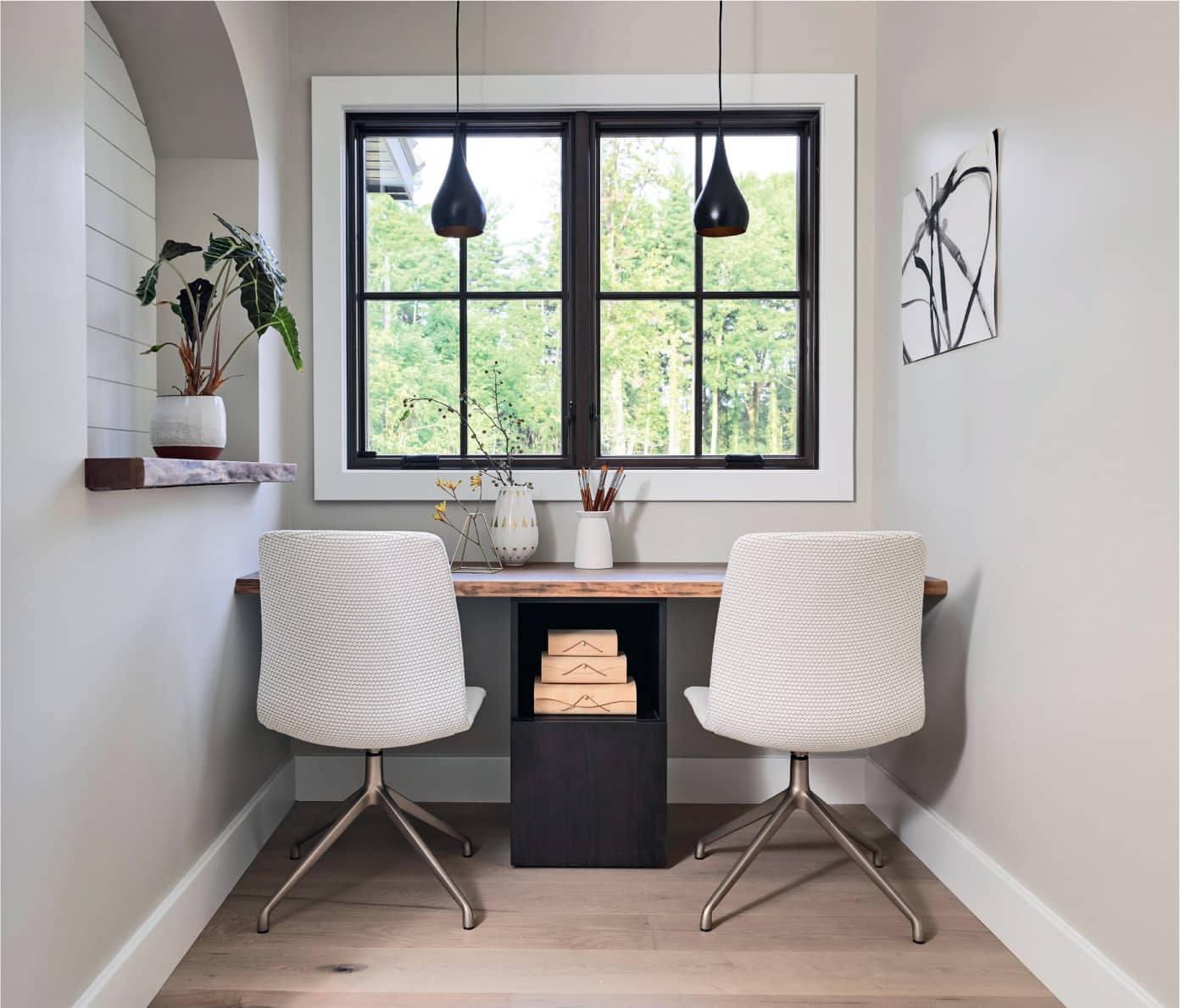78 Rule of Thirds
A compositional system that gives structure to an image or space.
The rule of thirds is a system, originally from fine art painting, that divides a composition into a nine-square grid. The rule discourages the placement of the main subject of an image at the visual center of a frame, and prefers placement along one of the axes instead.
While this rule is framed around a static point of view, it can be useful in determining how to place objects when seen through the various apertures and framing devices that designers use—doors, windows, and larger openings. In addition, stand-alone elements that horizontally divide a space, such as a counter, shelf, or table can be used to enhance one of the main axes.
When composing wall elevations, the rule of thirds can help direct the placement of artwork, suggest locations for wall lighting, and indicate where breaks in material, reveals, and changes in finish or color may occur.
It is also a good compositional rule to consider when taking the final photos of a project. Take a cue from professional photographers and turn on a rule of thirds grid overlay on your camera while looking for scouting shots to help determine what images are important to the project.

In composing a space or an image, the internal intersections (circled below) provide axes’ for horizontal and vertical alignment with objects of interest. These grids are easily enabled in digital photography and 3D applications.

A rule of thirds grid overlaid on a photograph. Critical alignments are made to ensure that proportion and point of view are balanced in the frame.

A nook for a desk uses desk elements, shelves, and hanging light fixtures to determine proper rule of thirds placement.
